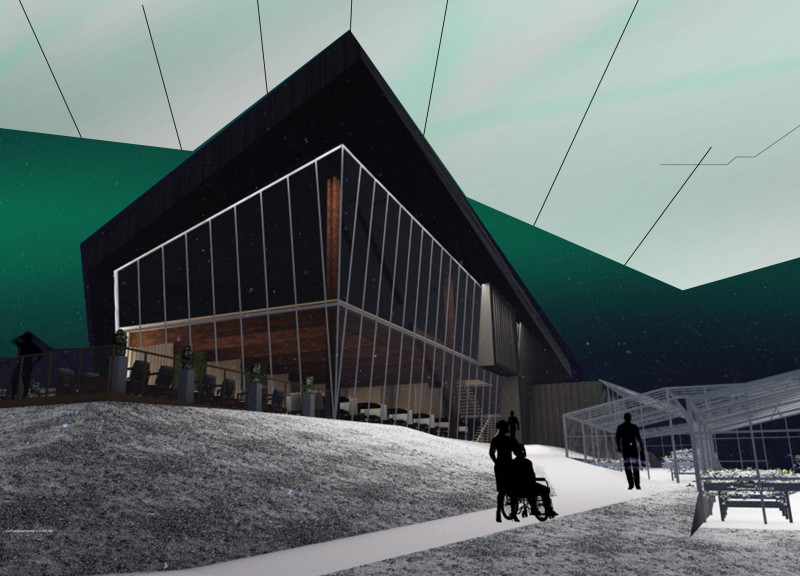5 key facts about this project
The design features a restaurant located on a sloping site that overlooks the Hverfjall volcano and Myvatn nature bath in Iceland. The natural setting greatly influences the design concept, which focuses on creating a connection between the building and the surrounding landscape. This connection is achieved through the building's trapezoidal shape, which responds to local climate conditions and enhances the overall experience for visitors.
Design Integration
The restaurant is positioned at the highest point of the plot, allowing diners to enjoy optimal views. Red pathways, specifically designed as ramps, provide easy access for people with disabilities. This thoughtful design choice promotes movement throughout the site and enriches the visitor experience, inviting them to engage with the views available at different points along the route.
Spatial Functionality
The layout thoughtfully separates areas for dining and food production. By incorporating distinct units for guest services and a greenhouse, the design supports both food cultivation and visitor engagement. This transparency allows guests to observe food production, creating a connection between their meals and the broader agricultural process. The separation of front-of-house and back-of-house elements also improves the efficiency of daily operations.
Environmental Considerations
Sustainability plays a central role in the design. The building operates as a low-energy space, utilizing hot springs for heating, which is positioned in a technical area of the basement. The orientation of the structure towards the south and east reduces energy costs during winter. Additionally, the greenhouse is designed to optimize natural light and ventilation, ensuring suitable conditions for organic food production and aligning with environmentally friendly practices.
Materials and Atmosphere
Materials used in the design include glass, steel, and concrete, each contributing to the building's functionality and aesthetics. Glass creates a connection between indoor and outdoor spaces, allowing natural light to enhance the interior environment. Steel provides structural strength, while concrete adds durability. Together, these materials form a comfortable and modern atmosphere that fosters a sense of belonging, where the architecture harmonizes with the natural surroundings.






















































